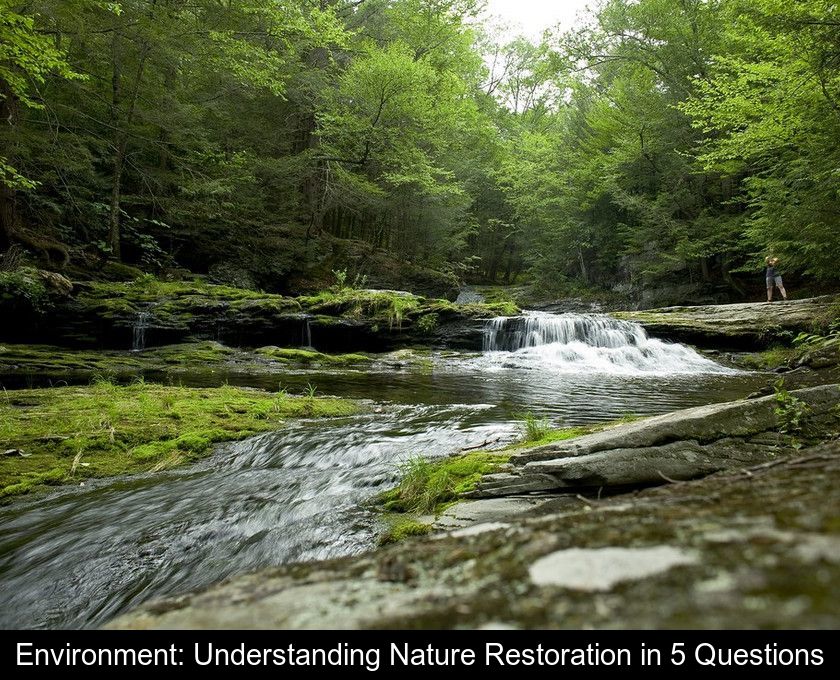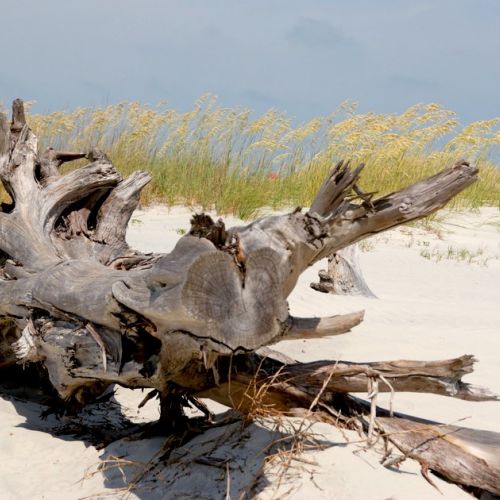Environment: Understanding Nature Restoration In 5 Questions
Nature restoration is one of the cornerstones of the European Green Deal aimed at reducing greenhouse gas emissions and achieving climate neutrality by 2050. But what exactly does it involve? And how does the European Union plan to repair its degraded ecosystems? We offer you a better understanding of this concept in 5 questions.
What is nature restoration?
The restoration of nature is a strategy that goes beyond just protecting existing ecosystems; it also aims to repair the damage that has already been inflicted on various natural habitats.
According to European bodies, 80% of natural habitats in Europe are currently in a poor or inadequate state of conservation due to urbanization, pollution, or intensive land use.
The goal is to repair the degradation affecting the most fragile ecosystems such as wetlands, peat bogs, dunes, and grasslands.
What does European law say about nature restoration?
The Nature Restoration Law was adopted by the European Parliament in July 2023. On November 10, 2023, the EU member states reached an agreement on this controversial text after lengthy negotiations.
This law stipulates the restoration of 20% of the lands and seas of the European Union by 2030 and all degraded ecosystems of the EU by 2050.
Each member state has a two-year deadline to develop a national plan to achieve these objectives. Actions to restore ecosystems may include replanting hedges and trees, removing obstacles from watercourses, or restoring wetlands.
What is the benefit of restoring nature?
Nature restoration is an increasingly popular strategy to address the rapid degradation of ecosystems. It offers a potential response to the collapse of biodiversity as it helps to preserve life and promote the return of declining species, such as prairie butterflies and birds on farmland.
The desire to repair what has been damaged is also a way to limit the consequences of climate change. Indeed, healthy and resilient ecosystems are better at withstanding climate change, extreme weather conditions, and natural disasters. For example, river restoration can help reduce the risk of flooding by naturally regulating water level fluctuations.
Ecosystem restoration is one of the most effective and cost-efficient ways to meet our commitments to limit global warming to less than 1.5°C. Forests and peatlands capture CO2 and help mitigate the effects of climate change.
What specific measures are being considered?
The agreement reached by European lawmakers stipulates that EU member states must:
• reconnect 25,000 km of European rivers.
• repair damage related to soil sealing and re-wet drained peatlands.
• take measures to support forests, for example by removing non-native plants.
• protect pollinating insects such as bees and their habitats.
This text still has to be formally approved by the Council and the European Parliament for final adoption. The final vote in Parliament is scheduled for November 29, 2023.
What are the limits of nature restoration?
The European law on nature restoration is a historic agreement to prevent the collapse of biodiversity in Europe and mitigate the consequences of global warming within the EU.
However, it should be noted that this agreement is a compromise that required many concessions. The result obligations initially set by the law were replaced with obligation of means.
The restoration obligations are also lighter on agricultural lands. The text even provides for an "emergency brake" that allows for the temporary suspension of the law's application on agricultural lands in case of a threat to food security.
Some environmental protection associations have pointed out that this text lacks ambition and that restoration or compensation actions have their limits. According to WWF, this "largely imperfect" text is nonetheless "a step in the right direction".





